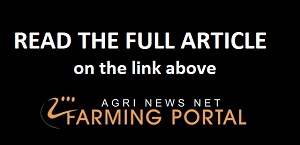With March the first full month of elevated global grain and oilseed prices due to the Russian invasion of Ukraine, the recent release of March food inflation figures in South Africa was keenly anticipated.
Contrary to expectations, food inflation softened by 0.2 percentage points from 6.4% in February to 6.2% in March. This was largely due to lower inflation in Milk, Eggs, Cheese, Oils and Fats, and Vegetables with the most apparent effect in vegetables, which decreased from 7.7% in February to 2.8% in March. During March and April 2021 tomato and potato prices were high due to weather disruptions earlier in the year. As a result, annual increases during March 2022 were more moderate even though the prices of products such as tomatoes were still high. Bread Cereals and Meat did however record an uptick in inflation, with the former increasing from 3.7% in February to 4.7% in March.
This is attributed to the significant spike in global commodity prices of wheat, maize and sunflower oil. During March global reference prices of these products increase by between 16% and 55%, at their peaks, which also affected local prices. Although prices of some commodities such as wheat have declined somewhat since then, prices are trading around 20% higher for wheat and 23% higher for maize, compared to the months preceding the invasion. The effect is likely to spill over to higher retail prices for the rest of 2022, which will put pressure on household budgets and social support systems. Year-on-year price increases for meat are still close to double-digit figures. For red meat specifically, this is underpinned by a combination of short supply and high input costs, reflecting persistently high grain and oilseed prices. However, price increases during March did lose momentum and it is expected that the meat prices will ease over the coming months. This expectation is supported by increasing signs of constrained demand due to higher interest rates, electricity and fuel costs, to name but a few, along with typical seasonal impacts as winter approaches. Significant disinflation in meat is however unlikely given the significant rise in input costs. Here a caveat is the multiple foot-and-mouth disease outbreaks that have occurred around the country over recent weeks.
Although this has not yet affected our ability to export bilaterally to the Middle East, it has influenced exports to China and also poses a significant risk to the industry if additional export agreements were to be compromised. This implies significant downside risk related to red meat prices. Over the past months, a mitigating factor that contributed to keeping food inflation subdued was the relative strength of the rand. In the third week of April, the rand however depreciated to above R15.00 to the dollar for the first time since mid-March. This is driven by local factors such as loadshedding and the recent floods in KZN and the effect that this could have on the fiscus, combined with an increase in global (China specifically) and local Covid cases and poorer export prospects as global growth wanes. Globally, inflationary pressures are also providing scope for tighter monetary policy from countries such as the US, which also puts pressure on the rand. Our view is therefore that food inflation will remain above 6% in April and May as the effects of the Russian invasion of Ukraine, high input costs and a weakening in the exchange rate continue to drive prices higher.















